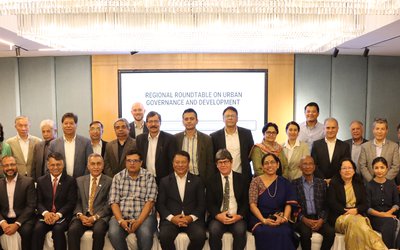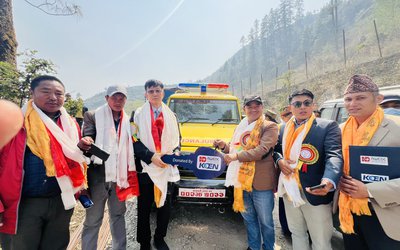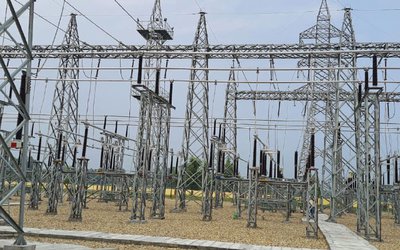
When the winter arrives, the shareholders of Annapurna Cooperative, a dairy cooperative of Gitanagar Village Development Committee of Chitwan District, have one major concern: how to chill and store the milk products while operating their dairy farms. Although the cooperative had taken several initiatives, the efforts were all going in vain.
But, as they say, when there is a will, there is a way. Known for providing many alternative technologies in the area, Practical Action finally agreed to support Annapurna Cooperative to implement a pilot bio-gas plant with a bigger capacity two years ago.
With 107 cows, the plant installed inside the farm is now generating 5 KW electricity, which is enough to run a water pump, chill milk, and do some other light and essential work. Although the revised new plant is just in the piloting stage, it can make a difference in many rural parts of Nepal, generating more energy for use.
“As it has shown the good results , this type of plant can be replicated in different parts of Nepal. What Nepal needs now is bigger scale biogas plants,” said Dr. Sujan Piya, head of program, agriculture, food security and market, at Practical Action Nepal. "Our piloting has shown that such upgraded versions of the plant will produce more energy than the traditional ones.”
According to the Alternative Energy Promotion Center, there were over 316,560 biogas plants by mid of June 2014. They provide clean energy for nearly six per cent of the country´s total households. If the theory of one plant saving 1.25 trees a year is to be believed, Nepal´s biogas boom is now saving more than 395,000 trees every year.
As Practical Action Nepal has been piloting the upgrading of the plants to produce more energy for the past few years, Alternative Energy Promotion Center has also realised the need to do the same.
With the support from the World Bank, Alternative Energy Promotion Center has started to install the big bio-gas plant in the poultry farms, animal farms, food industries and solid waste dumping sites of municipalities. Over 12 cubic meters is regarded as a big plant in Nepal.
Nepal has already made a remarkable progress in traditional small biogas plants to produce energy for cooking and lightning, but a nationwide campaign to boost the present state of biogas to solve prolonged load-shedding is yet to take off.
Although Nepal is a pioneer in installing bio-gas plants in rural households, only a few steps have been taken to upgrade the current plants and making them a little bigger, at least to support the commercial activities of the people.
Biogas colourless and burns with a clean blue flame similar to that of liquid petroleum gas (LPG), allowing for virtually smoke-free combustion. Biogas can be used for cooking and lighting, refrigeration, engine operation and electricity generation. To date, biogas is used mainly for cooking (80%) and lighting (20%) in Nepal.
Nepal started to use the bio-gas from the mid-1970s. However, it is just recently that the government has started to install the bigger plants with larger capacities. “Although it is in a piloting phase, the government will also learn from plants introduced by Practical Action,” said spokesperson of National Planning Commission.
According to a study by Practical Action, like many other programs, it has also successfully launched the alternative energy programs throughout the country. However, Gitanagar’s piloting program will be a game changer in the long run to transform Nepal’s biogas sector.
- IME GROUP: Expands Into Paper Industry
- Mar 24, 2025
- CPN UML: Instigated By India
- Mar 23, 2025
- ADB’S CHIEF ECONOMIST: Nepal Reduces Poverty
- Mar 11, 2025
- FM DR. DEUBA: A Successful Visit
- Mar 11, 2025
- MD GHISING: Target Of Personal Grudge
- Mar 09, 2025















